The Great Synagogue of Rome
When in Rome, take a tour of this working synagogue, built as a monument to the tenacity and longevity of the Jewish community in Rome
Image from Museo Ebraico di Roma
YESTERDAY I HAD THE PRIVILEGE OF VISITING the Great Synagogue of Rome, a gorgeous building that was “only” completed in 1904, making it practically news of the day compared with the other religious edifices we’ve been wandering through. And I learned a lot about the Jewish community of Rome, which dates back 2,000 years and which I knew nothing about before now.
Photo Harriet Brown
One of the most fascinating aspects of the visit was learning that Roman Jews spoke their own language, known as Judeo-Roman or Italkit. The Jewish ghetto in Rome dates back to 1555, when Pope Paul IV decided to sequester the city’s 2,000 Jews in a 7-acre area that flooded often, in the hope of either killing them off or inspiring them to convert. As our guide told us yesterday, his plan failed and the Jews of Rome survived until September 20, 1870, when Italy was unified and the Jews were emancipated.
In 1900, about 20,000 people spoke Judeo-Roman, or at least one of the many sub-varieties clumped under the name Judeo-Roman and written in Hebrew letters, including Judeo-Venetian, Judeo-Florentine, Judeo-Piedmonteses, and other dialects. Today no one speaks it. You can start a deep dive into Judeo-Roman linguistics by listening to this YouTube lecture from Dr. Aaron Rubin, a linguistics researcher and co-editor of The Handbook of Jewish Languages.
Photo Harriet Brown
The Great Synagogue features the only square-based dome in the city, which looks from the inside like the oculus at the top of the Pantheon, though it’s not open to the sky. Its lavish Art Nouveau interior is well worth a visit if you happen to be in Rome.
A chuppah set up permanently in front of the central ark. Photos Harriet Brown
Downstairs, you can wander through the Jewish Museum of Rome, most of whose collections have been donated by Italian Jews. I especially loved the textiles, including many gorgeous examples of the mappah, richly embroidered and embellished fabrics that cover the Torah scrolls. (These are usually known as פרוכת ארון.) I could have spent all day poring over the brocades and intricate gold and silver embroideries.
Photo Harriet Brown
Other aspects of Jewish life in Rome are also represented in the museum’s collections. The image below, for instance, came from the Israelite orphanage of the early 20th century.
Photo Harriet Brown
I’m sad that we didn’t get to try any of the food in the Jewish quarter, which I’ve heard is delicious. La prossima volta!

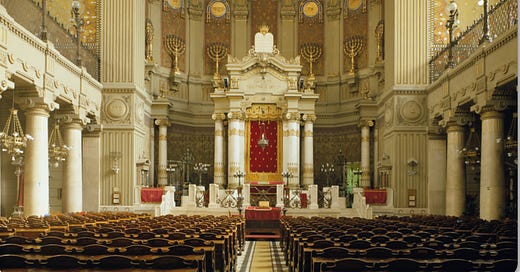




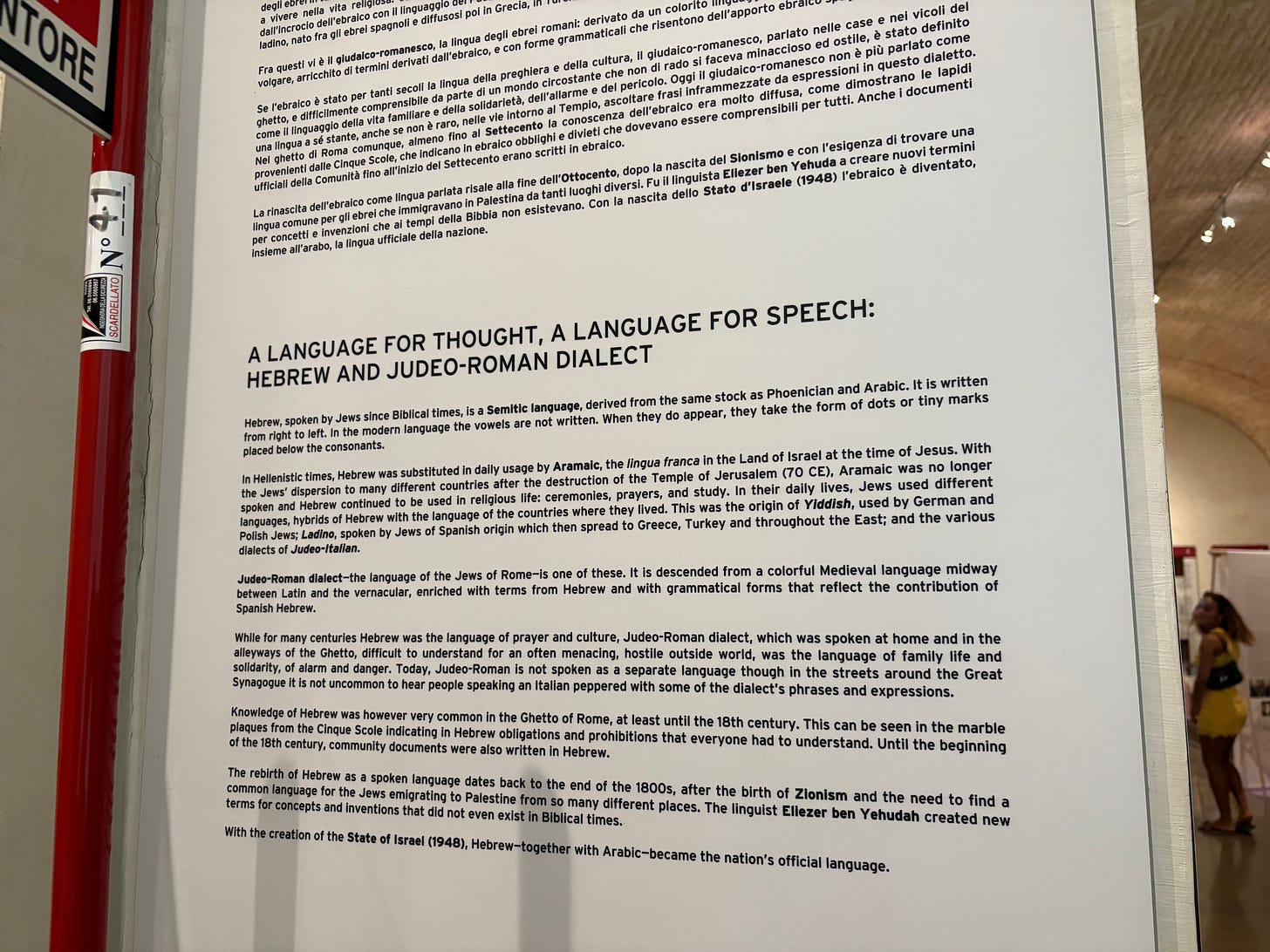
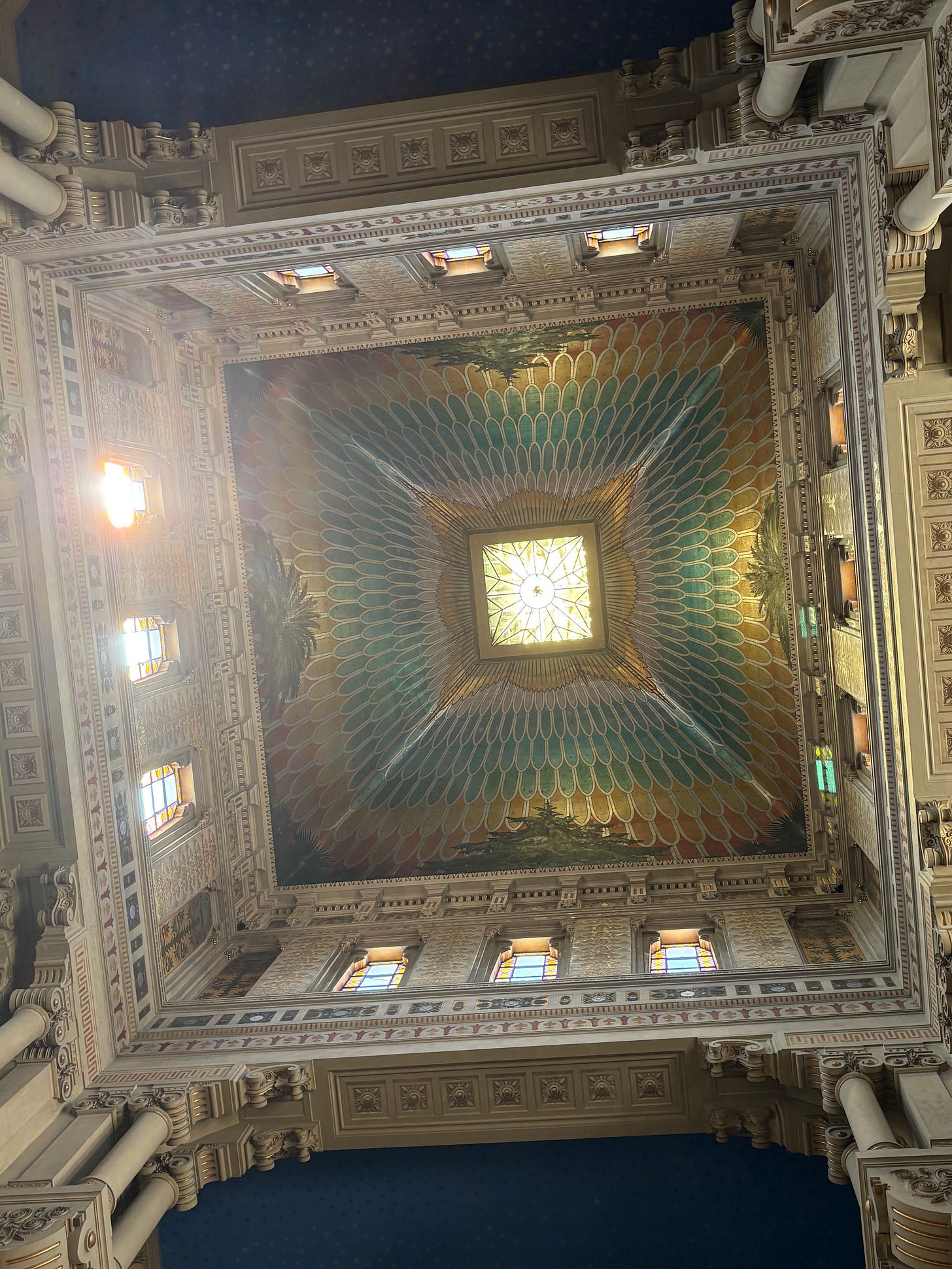
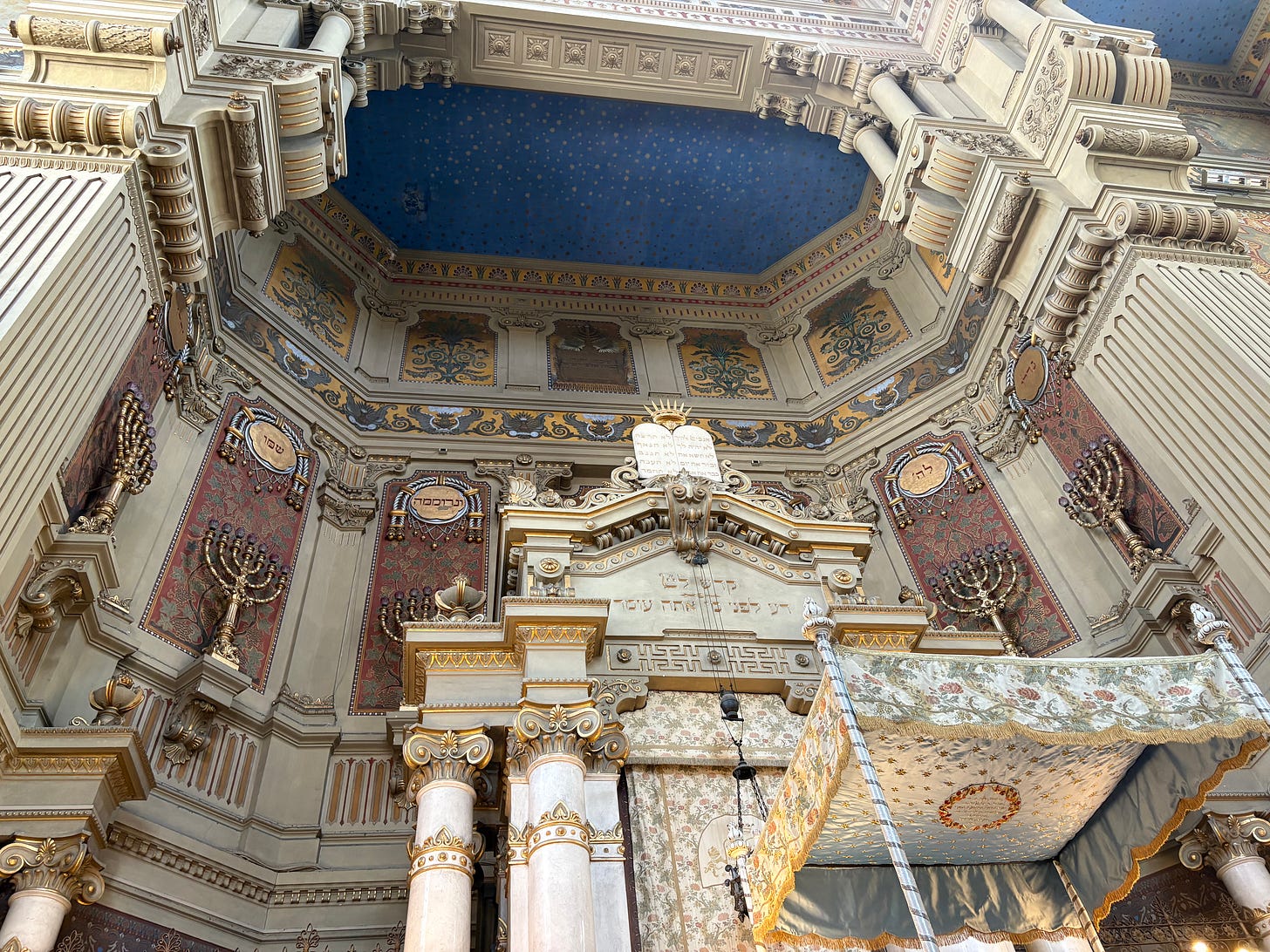
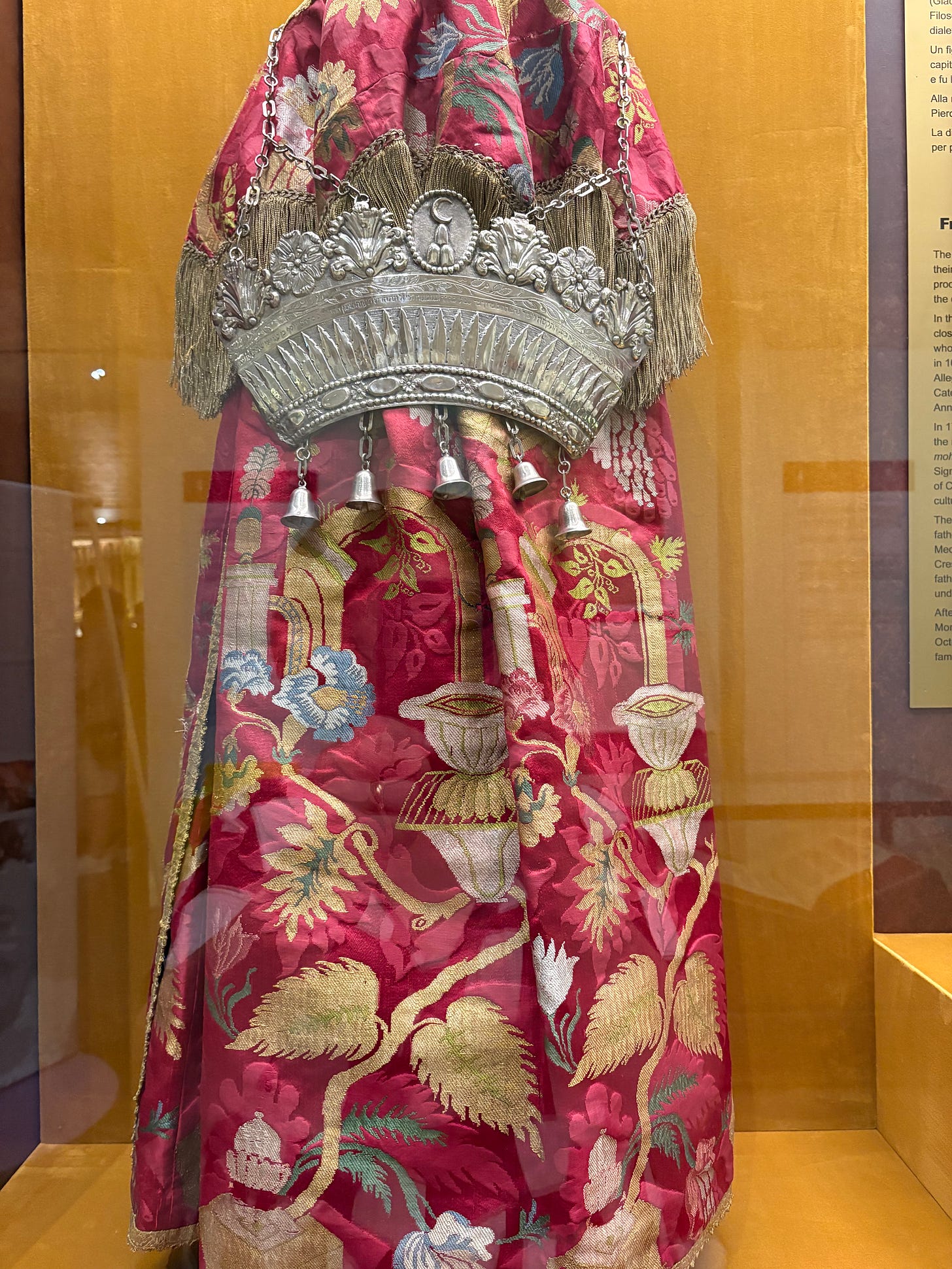
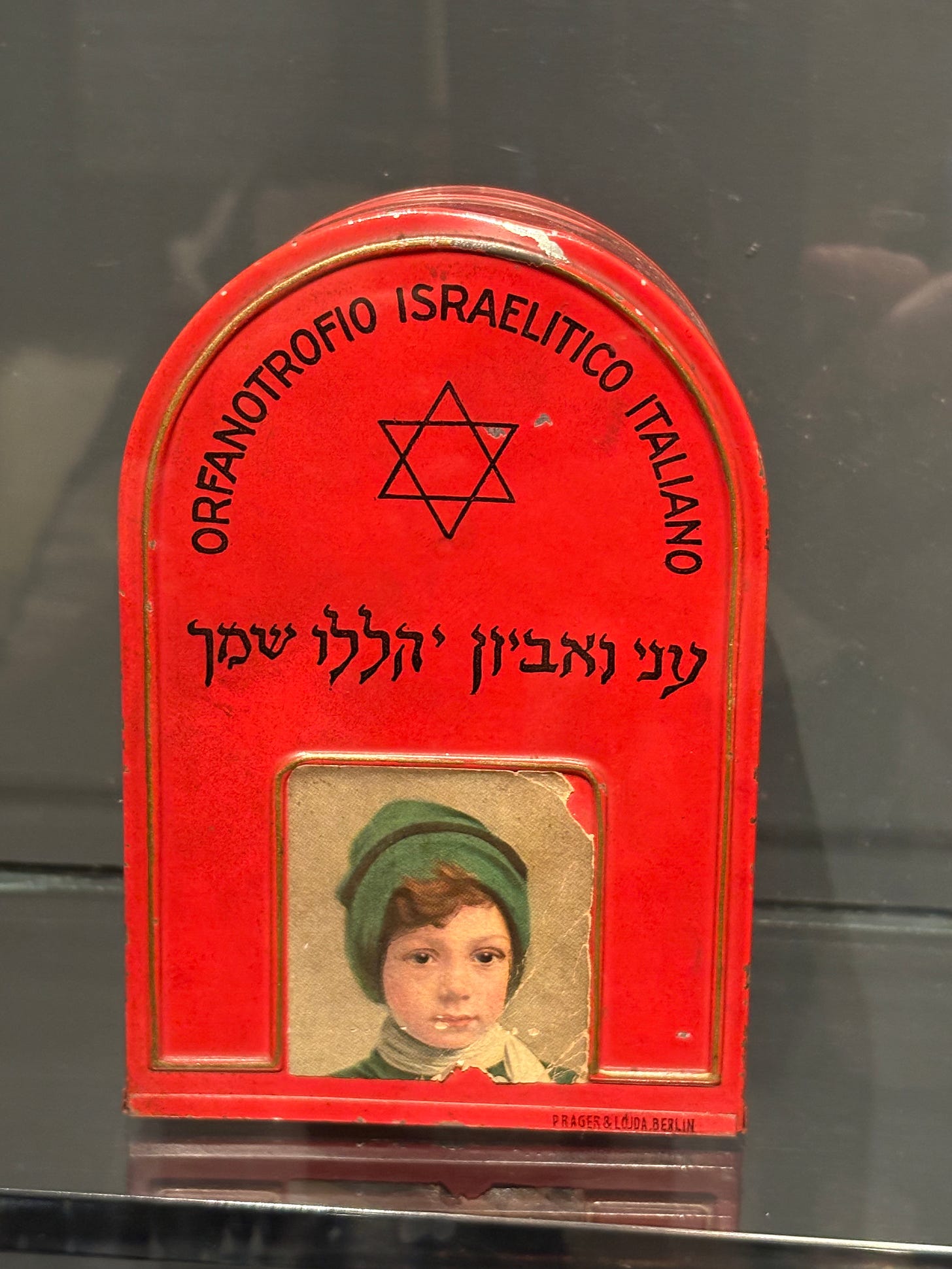
What a fabulous tour Harriet and bravo on the images
Fascinating history which I was unaware.